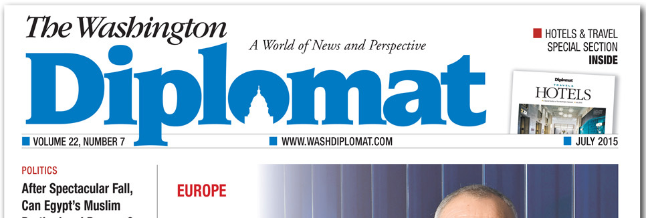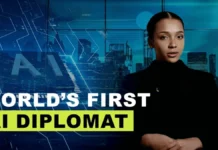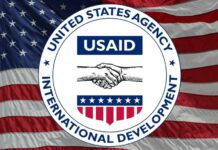Another interesting world leader to establish herself as a Linkedin Influencer is Helen Clark, former Administrator of the United Nations Development Program (UNDP) and former Prime Minister of New Zealand.
Clark, who run for the post of UN Secretary-General in 2016 and has always been very active on social media, did not post with much frequency but managed to attract almost 40,000 followers. The post on her nomination to UN Secretary-General generated over 11,000 views, around 1,200 likes, and more than 100 comments.
“At its best, the position of UN Secretary-General is about giving a voice to seven billion people. I intend to run a very accessible campaign, and look forward to engaging with the UN General Assembly and the public in the weeks and months ahead,” she wrote.
Three months into her campaign, she posted an update with her assessment and what was coming next before the election.
“It is indeed good to see so much public engagement in the debate about who should fill the post, and the greater opportunity for all UN Member States to engage in it,” she said.
Somebody who has started recently to experiment on Linkedin is Christine Lagarde, Managing Director of the International Monetary Fund (IMF), whose first article on the platform was about women’s empowerment and jobs for women in the business sector, posted on International Women’s Day.
“As countries around the world seek to grow their economies and reduce inequality, tapping into the huge potential of women can be a game changer,” she wrote. “Recent analytical work — including that done at the IMF — clearly demonstrates the compelling business case for women’s empowerment. Everyone has a role to play — including governments, businesses, and international institutions.”
Because Linkedin is a social network mainly dedicated to professionals and job search, it is a bit harder to think of it as a way to connect with world leaders. It is, however, a great way for diplomats and ministries of foreign affairs, development professionals, charities, foundations, and all interested in foreign policy to create networks, interact with peers, and explore new connections for current or future projects.
This is the true power of Linkedin.
In December 2015, three years after the launch of the Influencers platform, Linkedin published the list of top 10 Influencers of 2015, ranked by engagement. No political figure is among them and it’s not shocking to see two global entrepreneurs like Bill Gates and Richard Branson topping the list. The only foreign policy-related individual to be included was Ian Bremmer, President of Eurasia Group, and very social media savvy.
In Linkedin’s 2016 top Influencers ranking, Bremmer is still in the top 10. However, country-specific rankings include: in the UK, Winnie Byanyima, Executive Director of Oxfam International (in the UK); in India, Modi and former UN official Shashi Tharoor, now a Member of Parliament; in France, Gilles Babinet, Digital Champion of France at the EU Commission and former president of the French National Digital Council (CNN), Bertrand Piccard, Founder of Solar Impulse, and Axelle Lemaire, former Minister of Digital Affairs.
Now, before Obama’s 2007 debut on Linkedin or even after the launch of the Influencers platform, the company seemed to have stayed pretty much out of the political and foreign policy fray.
However, the company, which in June 2016 was bought by Microsoft for a staggering $26 billion dollars, has reassessed its presence in the realms of politics and advocacy. In January 2016, Linkedin’s danhorowitz, Director of Advocacy and Campaigns, wrote an interesting post on the social site’s news focus.
“The opportunities for industry organizations, coalitions, non-profits and other third-party groups to connect with like-minded professionals around policy issues may be a new way to think about LinkedIn for some, but many groups already have found success on the platform,” Horowitz wrote as he took the helm of the new Advocacy Campaigns team.
“Like successful campaigns on other platforms, simply having a presence isn’t enough to drive results. But if you produce compelling content with a strong point of view, develop an effective targeting approach and engage thoughtfully, you are likely to create meaningful results.”
In a later post derived from a panel organized by Linkedin in partnership with the Public Affairs Council, Horowitz highlighted five key points to engage audiences in policy and advocacy areas and the site’s “unique ability to find, target, and engage a distinct professional audience that can be activated for advocacy, membership, development, etc.”
So, why can Linkedin be a useful tool for diplomats?
“More than 400 million people (124 million in the U.S.) have told us where they work, what they do, how long they have done it, where they went to school, where they used to work, what their skills are, and who they are connected to in their own networks,” Chuck Westover, formerly with Linkedin’s Politics Advocacy Team, wrote in a 2016 post.
Westover also stressed that there are very few “fake” profiles, something that in the past few years has become an issue for many social media. This is a unique trait of Linkedin compared to other platforms and it certainly shows a rather qualitative side on its audience.
“The fact that your Linkedin profile or page becomes essentially your professional identity ‘self-polices’ against this practice and leads to more substantive discussion in the comments sections on posts.”
Moreover, Linkedin allows you to reach a very educated audience. According to a 2016 study by the Pew Research Center, 65% of Linkedin users have a college degree. Interesting also that almost half of the users (46% to be exact) are between the age of 30 and 49. In particular, the company highlights that they have 87 million Millenials — their fastest growing audience segment — and 11 million of those are in decision-making positions.
The mindset of Linkedin users is also different, as they tend to focus on maintaining a professional identity, making useful contacts, and getting updates on brands, the news, and current affairs. Members are also very interested and engaged in policy content, including foreign policy — a recent survey showed that 17% of Linkedin’s members in the US wanted to hear about international affairs and foreign policy from presidential candidates. In addition, according to Linkedin data, their users are much more politically engaged than the average voter: 42% of them have shared or wrote a political post; and 40% attended a political event.
But Linkedin is trying to expand its reach. Recently, the platform rolled out a trending topic feed. Trending Storylines is a new section of the app where users can find a collection of recent news stories and accompanying user posts that are personalized based on their interests and profession.
“The obvious hope here is that better news curation will give users more incentive to spend time inside the app,” Recode wrote back in March.
“Over the past year, we have completely rebuilt the LinkedIn Feed experience,” Tomer Cohen, Vice President of Product at Linkedin, wrote in a recent post. “We redesigned it from scratch so you can fully control your feed experience and stay on top of conversations from people you are following and your connections.”
The launch of Trending Storylines comes shortly after the company released an overall redesign of the site for desktops.












